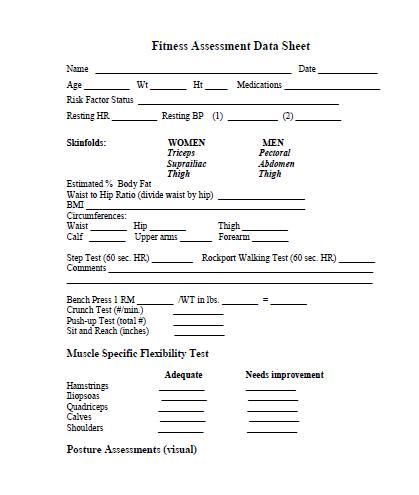
Exercise isn’t the most entertaining activity in the world. Most people don’t know how to make exercise more fun. You can make exercise more fun. Involving others in the exercise is one of the best methods. It's much more fun to exercise with someone than alone. Exercise with someone else can help you build a relationship with them. Workouts with someone you trust will help achieve your goals.
Choosing the right clothes can also make your workout routine more fun. Working out can make you feel self-conscious. It can be difficult to concentrate on your appearance. Try on different clothes and try them on before making a final decision. Find something you enjoy and feel comfortable in to exercise. You will be more likely to follow your routine if it is easy to do without feeling self-conscious.

You can make tough workouts more enjoyable by using a reward system. It's possible to listen to music, or save money as a reward for your hard work. Even if you don't like exercise as much as you'd like, rewarding yourself after each session of exercise is a great way to get motivated to stick with it. The best way to make exercise more enjoyable is to incorporate a variety of motivational exercises into your workout routine.
It's a great way of increasing your chances of sticking to an exercise plan. Many people have trouble sticking to their daily workout routines. You can stick to your workouts if you find the right motivation. Make it a joyful experience. You can make it more fun for yourself. It's easy to keep going. You may even find it beneficial for your mental health. This will allow you to feel that you are doing something worthwhile.
A fun environment is key to staying motivated. Exercise that is fun will make people more likely be consistent and stick with it. No matter how hard it takes, it is important to have a healthy lifestyle. This guideline will help you become a happier and healthier person. Your commitment to your fitness program will make it easier to stay consistent.

Changing up the routine is a vital step in keeping a healthy lifestyle. This helps reduce your risk of developing heart disease. It also prevents some types of cancer. It can also improve your mental well-being. By incorporating fun into your routine, you'll be more likely to keep it up for a long time. Listening to podcasts or watching television can be a fun way to exercise even if you aren't a fan.
FAQ
How do I get enough vitamins for my body?
You can obtain most of your daily requirement through diet alone. However, if you are deficient in any particular vitamin, taking supplements can help. A multivitamin supplement can provide all the vitamins you require. You can also get individual vitamins from your local pharmacy.
Talk to your doctor to find out which foods are rich in vitamins. The best sources of vitamins K, E, and C are found in dark green leafy veggies such as spinach and broccoli, kale.
Ask your doctor to help you determine the right amount of vitamin. He or she will recommend the appropriate dosage based on your medical history and current health status.
These are 5 ways you can live a healthy and happy life.
Living a healthy lifestyle involves eating right and exercising regularly. Healthy eating means avoiding sugary and processed foods. Exercise is good for your body and muscles. Getting enough sleep improves memory and concentration. Stress management reduces anxiety, depression and other symptoms. Fun keeps us happy and healthy.
How to measure your body fat
A Body Fat Analyzer can be used to measure body fat. These devices are used for measuring the percentage of body fat in people who want to lose weight.
Statistics
- According to the 2020 Dietary Guidelines for Americans, a balanced diet high in fruits and vegetables, lean protein, low-fat dairy and whole grains is needed for optimal energy. (mayoclinichealthsystem.org)
- In both adults and children, the intake of free sugars should be reduced to less than 10% of total energy intake. (who.int)
- The Dietary Guidelines for Americans recommend keeping added sugar intake below 10% of your daily calorie intake, while the World Health Organization recommends slashing added sugars to 5% or less of your daily calories for optimal health (59Trusted (healthline.com)
- WHO recommends reducing saturated fats to less than 10% of total energy intake; reducing trans-fats to less than 1% of total energy intake; and replacing both saturated fats and trans-fats to unsaturated fats. (who.int)
External Links
How To
What does the "vitamins” word mean?
Vitamins can be described as organic compounds found in food. Vitamins aid us in absorbing nutrients from the food we eat. Vitamins cannot be produced by the body. They must be acquired from food.
There are two types vitamins: water soluble or fat soluble. Water-soluble vitamins dissolve in water easily. These include vitamin C (thiamine), Vitamin B1 (riboflavin), Vitamin B2 (riboflavin), Vitamin B3 (niacin), Vitamin B6 (pyridoxine), Vitamin C, B1 (thiamine), Vitamin B2 (riboflavin), Vitamin B3 (niacin), and Vitamin B6 (pyridoxine). Fat-soluble vitamins can be stored in the liver or in fatty tissue. You can find vitamin D, E K, A, beta carotene, and other fat-soluble vitamins.
Vitamins can be classified according to biological activity. There are eight major categories of vitamins.
-
A – Essential for normal growth, and the maintenance of good health.
-
C - essential for nerve function and energy generation.
-
D – Essential for healthy teeth, bones and joints
-
E is necessary for good vision, reproduction.
-
K - required for healthy muscles and nerves.
-
P - essential for strong bones, teeth and tendons
-
Q - Aids in digestion and absorption.
-
R is required for the production of red blood cells.
The recommended daily intake (RDA), of vitamins varies with age, gender and physical condition. The U.S. Food and Drug Administration has established the RDA values.
For adults over 19 years, the RDA is 400 mg per day for vitamin A. For fetal development, pregnant women need 600 mg per day. Children ages 1-8 require 900 micrograms per day. Infants below one year old require 700mg per day. But, between 9 months to 12 months, the amount drops to 500mg per day.
Children ages 1-18years who are obese need 800 micrograms per day while those who are overweight need 1000 micrograms per day and children who are underweight need 1200 micrograms per day to meet their nutritional needs.
2200 mg of vitamin A per day is required for children aged 4-8 who have been diagnosed by anemia.
Adults over 50 years of age need 2000 micrograms per day for general health. Mothers who are pregnant, nursing, or have a high nutrient need will require 3000 micrograms a day.
Adults over 70 require 1500 micrograms each day, since they lose around 10% of their muscle mass every decade.
Women who are pregnant or lactating need more than the RDA. Pregnant and breastfeeding women require 4000 micrograms each day during pregnancy and 2500 Micrograms each day after delivery. Breastfeeding mothers need to consume 5000 micrograms every day when breastmilk has been produced.